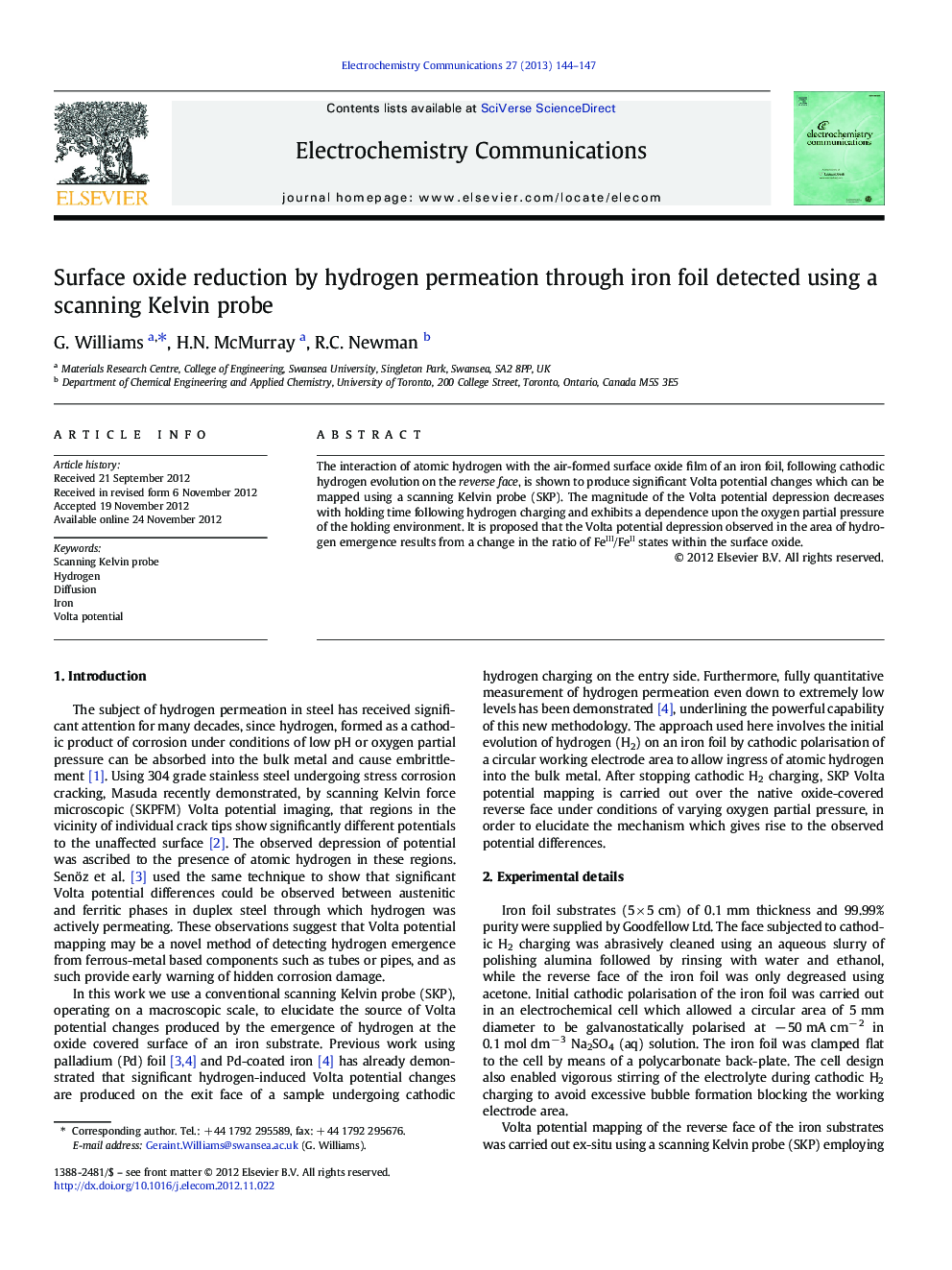| Article ID | Journal | Published Year | Pages | File Type |
|---|---|---|---|---|
| 179554 | Electrochemistry Communications | 2013 | 4 Pages |
The interaction of atomic hydrogen with the air-formed surface oxide film of an iron foil, following cathodic hydrogen evolution on the reverse face, is shown to produce significant Volta potential changes which can be mapped using a scanning Kelvin probe (SKP). The magnitude of the Volta potential depression decreases with holding time following hydrogen charging and exhibits a dependence upon the oxygen partial pressure of the holding environment. It is proposed that the Volta potential depression observed in the area of hydrogen emergence results from a change in the ratio of FeIII/FeII states within the surface oxide.
► Hydrogen diffusion through iron foil is studied by scanning Kelvin probe. ► Local Volta potential changes are detected in the region of hydrogen emergence. ► A dependence on oxygen partial pressure is observed. ► Atomic hydrogen at the metal–oxide interface reduces Fe(iii) to Fe(ii). ► Fe(ii) is re-oxidised at the oxide–air interface, maintaining a local equilibrium.
